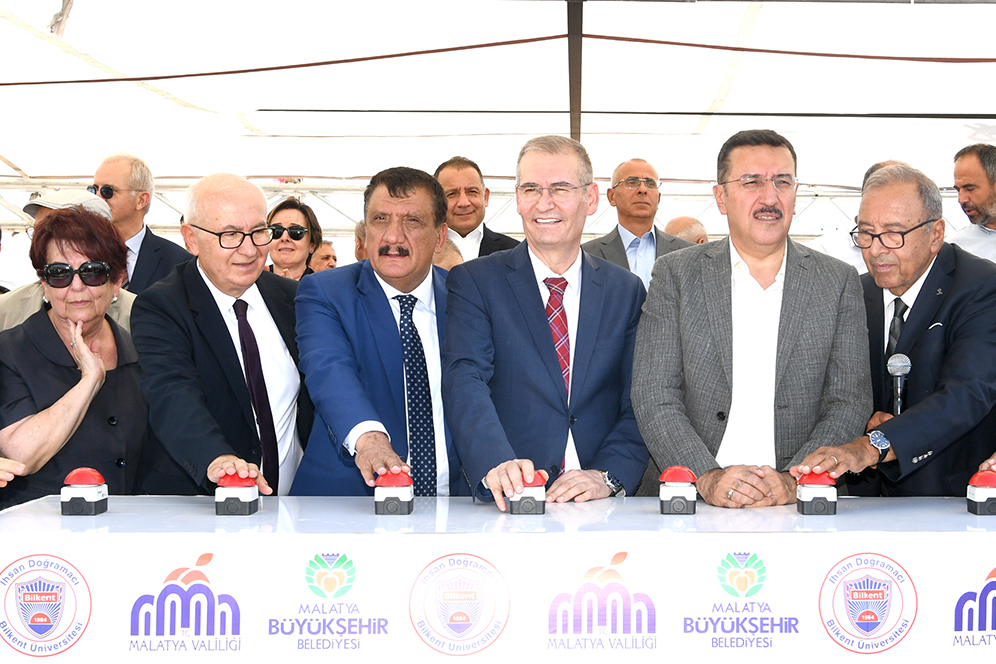
Bilkent Malatya Laboratory Schools: An Educational Vision Extending Eastward
Spearheaded by Prof. İhsan Doğramacı and his son Dr. Ali Doğramacı, the “Eastern Provinces Development Project” is part of a broader vision to extend the high-quality education model of Bilkent University—Turkey’s first foundation university—toward the eastern regions of the country. This initiative aims not only to enhance the quality of education but also to contribute to regional development. The first Laboratory School (BELS) was established in Erzurum in 2007. The second school, named İhsan Doğramacı Foundation Malatya Private Bilkent Laboratory Primary School, will commence its educational activities in Malatya in the 2025–2026 academic year.
Foundations and Legal Basis of the Project
The project was made possible by amendments to the Law on the Organization of Higher Education Institutions (Law No. 5526), which came into force in 2006. This legislation enables Bilkent University to establish institutes of educational sciences and affiliated primary and secondary laboratory schools in Ankara, Erzurum, Malatya, Şanlıurfa, and Van. The goal is to create educational centers of international quality and standards on these campuses.
Financing Model and Scholarship Opportunities
Described by Prof. Doğramacı as a major financial sacrifice, the project is funded through a special model. Income tax deductions from Bilkent University staff salaries are pooled into a dedicated fund to provide scholarships for students attending these schools. Additional revenue sources and donations secured by Bilkent University also support the project's financing. Importantly, at least seventy percent of students enrolled in the laboratory schools in Erzurum, Malatya, Şanlıurfa, and Van must be scholarship recipients.
Educational Philosophy and International Standards
Bilkent Laboratory Schools aim to align with the general goals and principles of Turkish national education, upholding Atatürk’s reforms and embracing national and cultural values, while simultaneously fostering an educational environment that meets high international standards. Students must meet success criteria in the International Baccalaureate (IB) exams to progress from 10th to 11th grade and to graduate from high school. This ensures that students are raised as “youth competing with the world.”
In the preschool and grades 1 through 8 of the Laboratory Primary Schools, alongside the national curriculum mandated by the Ministry of Education (MoNE), the Cambridge Primary and Lower Secondary Programmes (approved by the Turkish Board of Education) and the International Baccalaureate Primary Years Programme (PYP) and Middle Years Programme (MYP) may also be implemented.
Malatya Bilkent Educational Campus
As part of the “Bilkent Eastern Provinces Project,” the second school after Erzurum is being established in Malatya. The school’s groundbreaking ceremony took place on August 25, 2022, with the participation of Malatya Metropolitan Mayor Selahattin Gürkan, Chair of the Bilkent University Board of Trustees Prof. Dr. Gülsev Kale, Rector Prof. Dr. Kürşat Aydoğan, and Vice-Rector Prof. Dr. Erdal Erel.
The campus, located in Fırıncı Neighborhood of Battalgazi District near İnönü University, will be built on a 350-decare (approximately 86-acre) site and will include a kindergarten, primary school, middle school, and high school. Once completed, the school will serve a total of 900 students and include four housing blocks for teachers.
The construction project will be carried out in three phases:
- Phase One: Kindergarten and primary school classroom blocks, sports hall, multipurpose hall, cafeteria, library, and one residential unit (total indoor area of 18,000 m²), scheduled for completion during the 2025–2026 academic year.
- Phase Two: Middle school buildings (planned to open in 2028).
- Phase Three: High school buildings (planned to open in 2032).
The entire campus is planned to encompass approximately 47,000 m² of indoor space. The buildings will feature sustainable energy efficiency elements, such as natural ventilation, high thermal insulation, and orientation based on solar positioning. PV solar panels will be used to generate electricity.
Bibliography
- Bilkent Üniversitesi. (2006, 24 Haziran). Bilkent Doğu’da Eğitime Hizmet Verecek. https://www.bilkent.edu.tr/bilkent-tr/general/basin/bb-haber240606.html
- Hürriyet. (2006, 13 Haziran). Doğramacı’nın Büyük Projesi. Bilkent Üniversitesi aracılığıyla erişildi: https://www.bilkent.edu.tr/bilkent-tr/general/basin/bb-haber130606.html
- Bilkent University Malatya’da Bilkent Eğitim Kampüsü. https://w3.bilkent.edu.tr/www/malatyada-bilkent-egitim-kampusu/
- İhsan Doğramacı Bilkent Üniversitesi. (2023, 2 Şubat). İhsan Doğramacı Vakfı Özel Bilkent Laboratuvar Okulları Yönetmeliği (Sayı: 32092). Resmî Gazete. https://www.resmigazete.gov.tr/eskiler/2023/02/20230202-3.htm
- Yükseköğretim Kurumları Teşkilatı Kanununda Değişiklik Yapılmasına Dair Kanun, Kanun No. 5526. (2006, 4 Temmuz). Resmî Gazete, Sayı: 26218. https://www.resmigazete.gov.tr/eskiler/2006/07/20060704-3.htm




